Early on 2 January, a baby humpback whale washed up on the beach in Odawara, which is about 60km south of where I am in Japan.
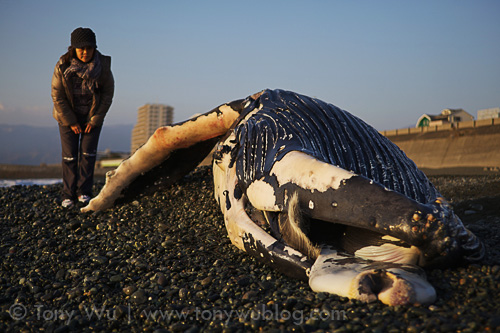
Dead humpback whale calf on the beach in Odawara, Japan
Yesterday, I travelled to the site to meet friends from the scientific community, who were planning to perform an autopsy to try to ascertain the cause of death. As it turned out, the local authorities didn't have the proper equipment available to handle the whale, so the autopsy had to be postponed for a few days.
Fortunately, it's the middle of winter here, so the carcass will keep to some extent, but the laws of nature dictate that additional deterioration will occur by the time dissection takes place.
Also, the cetacean pathologists will be at a meeting outside of Japan by then, so unfortunately, the cause of death will probably never be known.
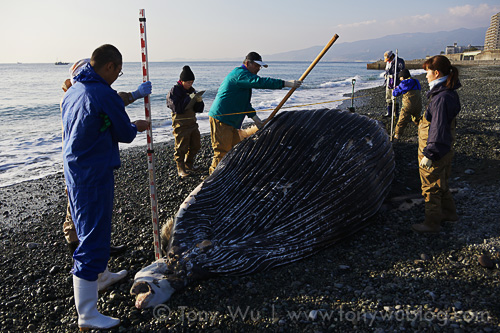
Researchers measuring deceased humpback whale calf
To the best of my knowledge, the animal was dead when it washed ashore.
Some patches of skin were missing, which is to be expected given the situation. There were some minor abrasions here and there as well, but nothing to suggest that injuries were the reason for the little humpback's death.
All that we were really able to ascertain is that the baby was male, measuring 6.87m in length. It probably weighed one to one-and-a-half tonnes or so, though we didn't have the equipment to confirm that.
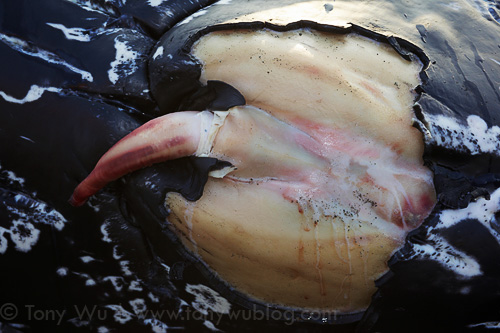
Penis of dead humpback whale calf
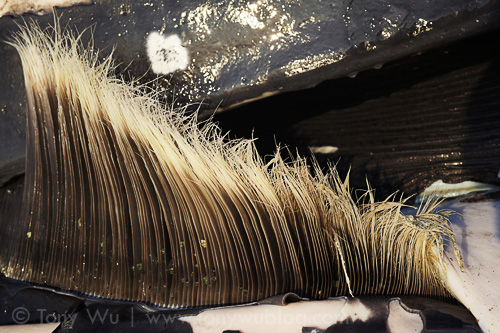
Baleen of dead humpback whale calf
My friends told me that the whale was the smallest humpback ever to have been recorded in a beaching/ stranding in Japan. Most babies that have washed ashore here have been in the eight- to nine-metre range. This is the third such beaching of the 2011-2012 breeding/ calving season in these waters.
[Amendment: I misunderstood what my friends told me about the size of the calf. I've received the full list of recorded humpback whale calf strandings in Japan, and it is clear that this beached calf is the smallest to be recorded during the winter season. The other records for this time of year reflect body lengths of between eight and ten metres, which implies that they were older, perhaps yearlings. The actual smallest dead humpback whale calf record in Japan is 6.11m in Ibaraki prefecture, found on 24 June 2002. The second smallest is 6.60m in Oita prefecture, found on 19 May 2004. So this one becomes the third smallest on record, but the smallest during this time of year.]
I've literally seen hundreds of baby humpback whales, but this is the first dead one I've come across.
The size of the calf suggested to me that it was quite young, perhaps a couple/ few months at most. It appeared to be about the same size as the larger calves in Tonga attain by early September each season, which is about two to three months into the breeding/ calving season there.
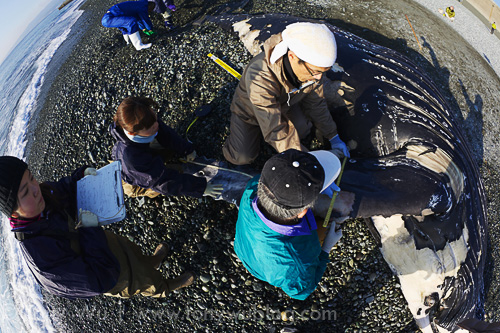
Researchers hard at work collecting data
I arrived on location quite early, around 07:15, so there weren't many people around and the light was still subdued. There was a brisk, bone-chilling breeze coming in from the sea. It took a few moments to collect myself when I saw the carcass.
Death, I suppose, is never a pleasant subject, but I've rarely had problems dealing with reality. In this instance however, I got a little choked up. I'm not ashamed to admit that I feel a particularly strong emotional bond with humpbacks, given the hundreds, perhaps thousands, of hours of my life I've devoted to them.
With light levels changing rapidly and the prospect of spectators showing up, I had to work quickly though, so I whipped out my cameras and commenced photographing. As soon as I started concentrating on handling problems like balancing white-out from harsh backlighting against the all-black of the whale's body, the immediate shock of confronting the dead whale wore off.
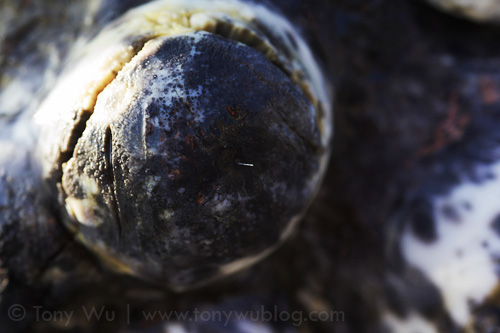
Single hair follicle protruding from tubercle
The most interesting part of the experience for me was seeing a hair follicle protruding from one of the tubercles on the humpback's rostrum. I knew in concept, of course, that each of these tubercles has a single hair inside, but it's normally not possible to observe tubercles so closely.
When the researchers pointed the hair out to me, I think I let out what can only be termed a shriek of excitement.
I flopped belly-down on the rocks and got soaked by the incoming surf a couple of times while looking at and photographing the hair, but the cold seawater drenching was worth it.
That single hair was confirmation that what lay before me was a mammal, evolutionary kin in a way, though we look almost nothing alike and lead such different lives.
It's tempting to wonder, even speculate, about what led to this animal's death, but in reality, there's just no way to be certain. Even with an immediate autopsy, the ability to ascertain the cause of death wouldn't be assured.
All we can do is measure, record, learn what we can...and hope that there aren't too many more.
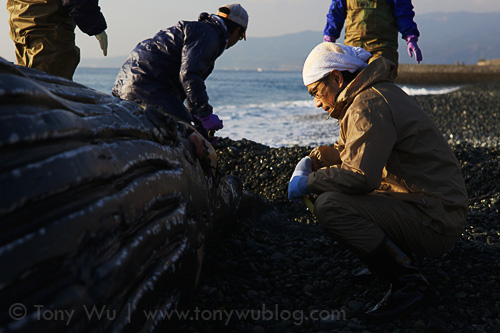
Researcher examining the humpback whale calf